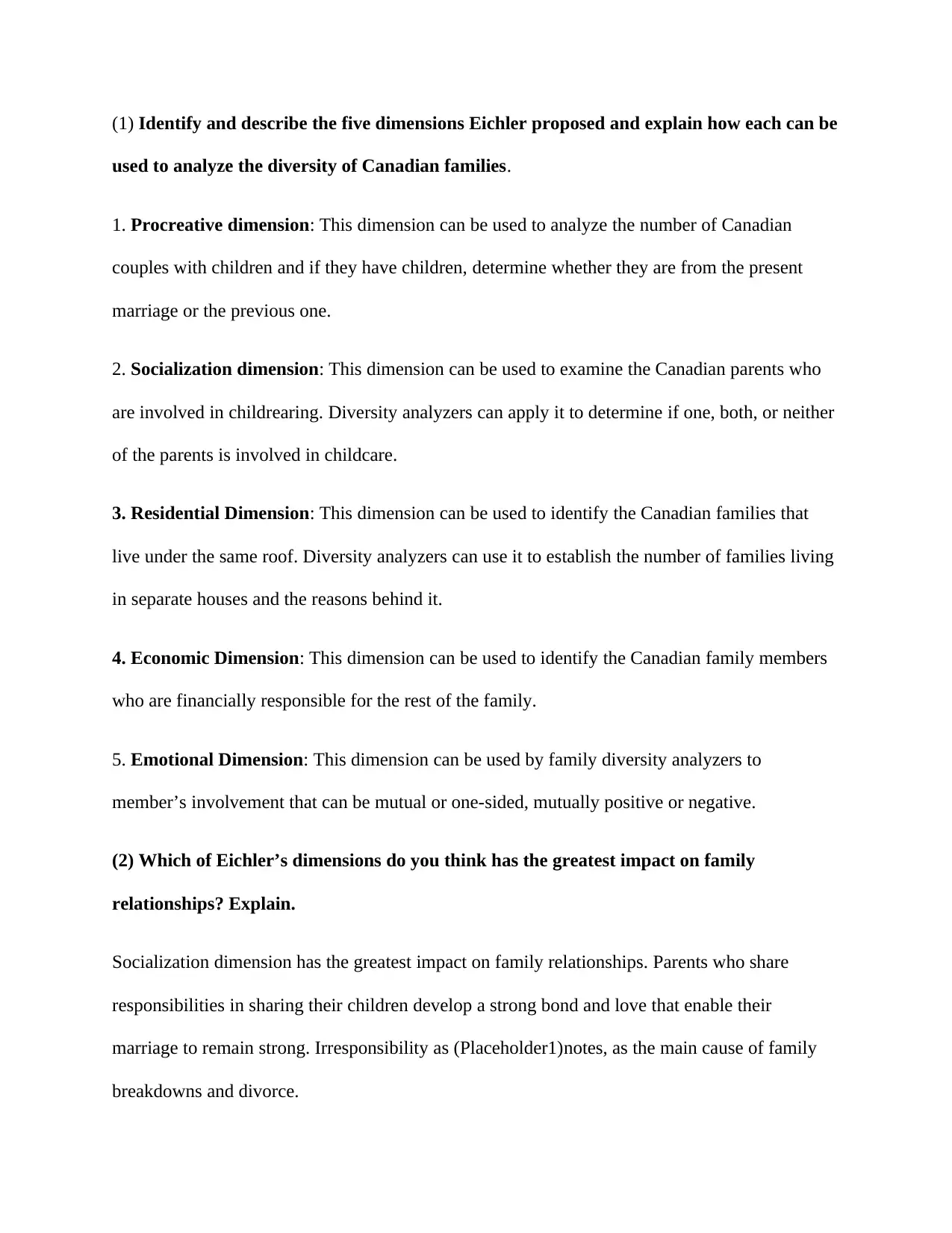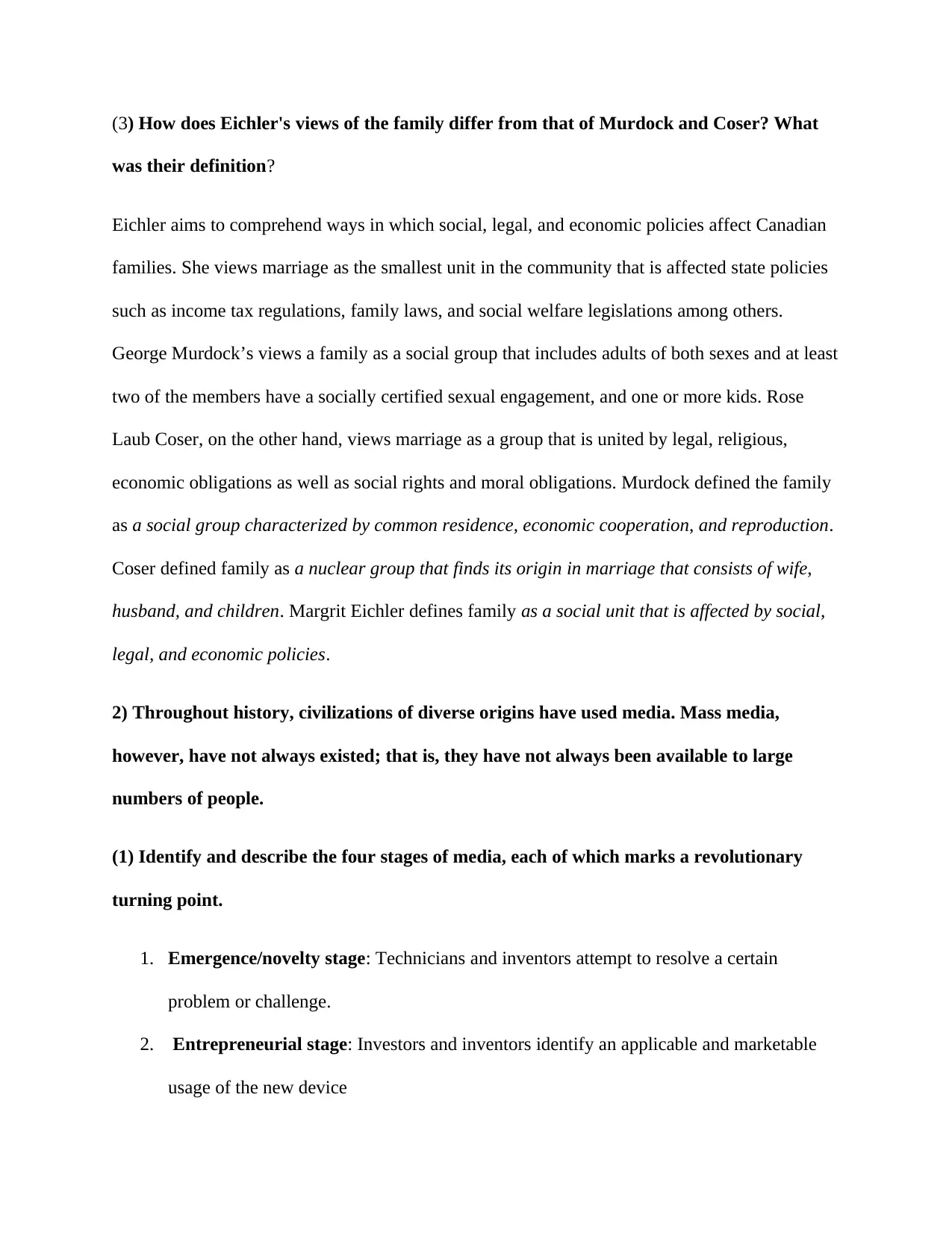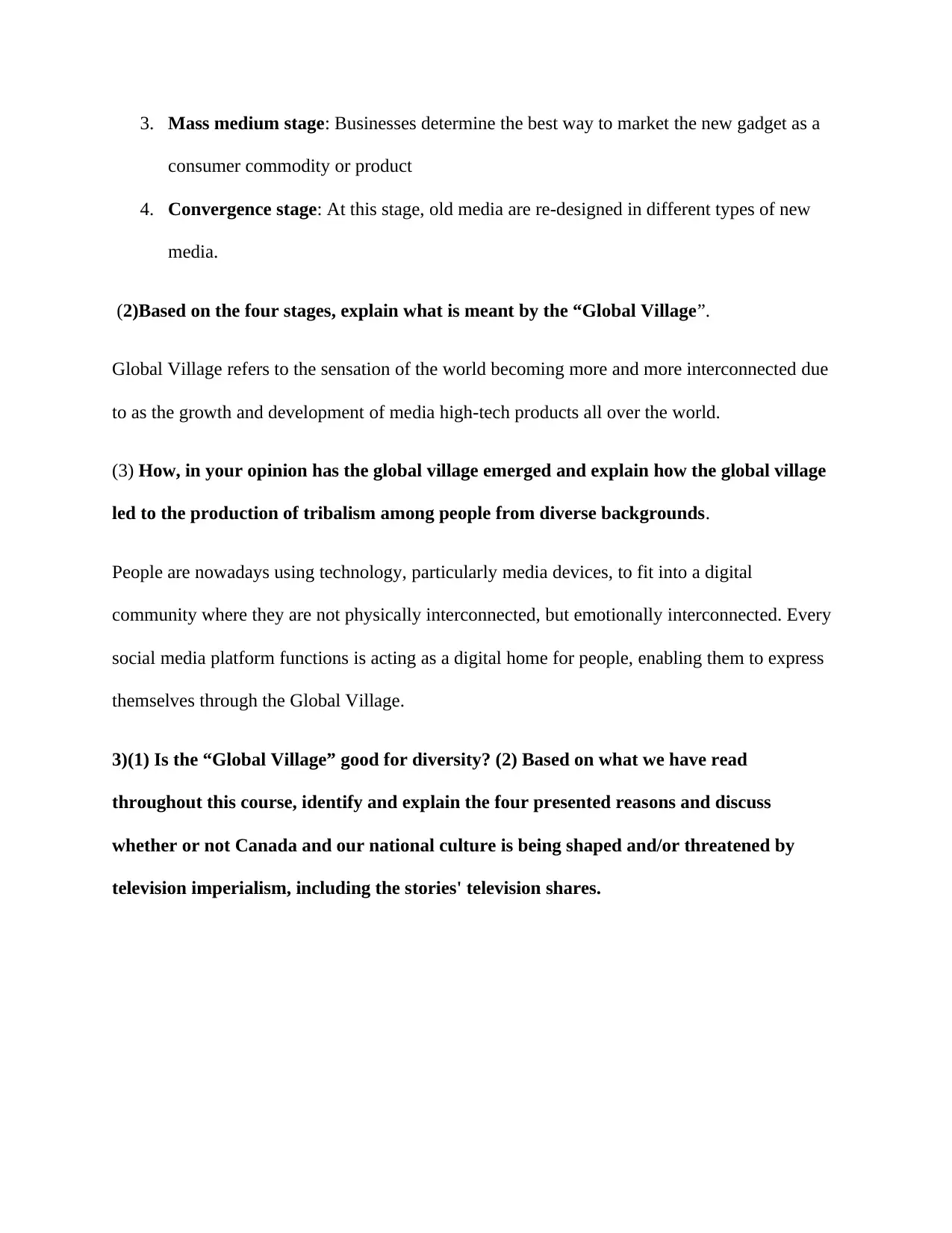SOC101 Assignment: Analyzing Canadian Families and Global Media Trends
VerifiedAdded on 2022/09/15
|3
|805
|19
Homework Assignment
AI Summary
This assignment solution addresses key sociological concepts, beginning with an analysis of Margrit Eichler's five dimensions of family diversity: procreative, socialization, residential, economic, and emotional. It then examines which dimension has the greatest impact on family relationships, with the socialization dimension being identified as critical due to its influence on parental bonds and family stability. The solution contrasts Eichler's perspective on the family, which emphasizes the impact of social, legal, and economic policies, with those of George Murdock, who defines family based on social group characteristics, and Rose Laub Coser, who focuses on the family as a unit formed by marriage and associated obligations. The second part of the assignment explores the four stages of media development—emergence, entrepreneurial, mass medium, and convergence—and explains the concept of the "Global Village" as a result of increased interconnectedness. It discusses how technology and media devices facilitate emotional connections within digital communities, leading to the formation of tribalism among diverse backgrounds. Finally, it considers the impact of the "Global Village" on diversity and whether Canadian national culture is shaped or threatened by television imperialism.
1 out of 3






![[object Object]](/_next/static/media/star-bottom.7253800d.svg)